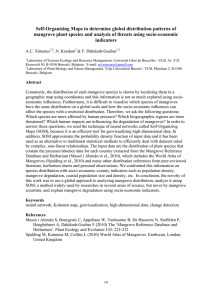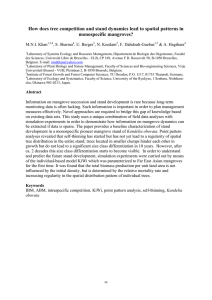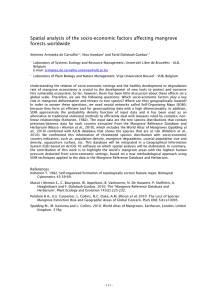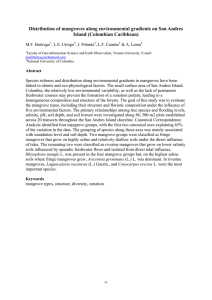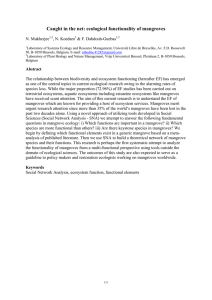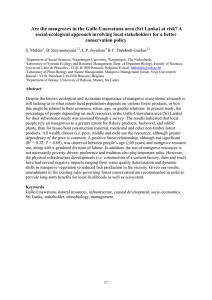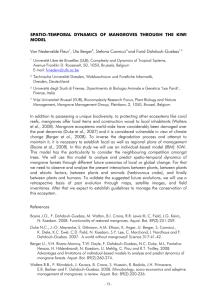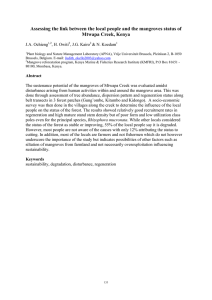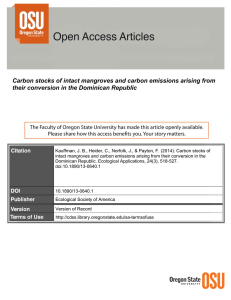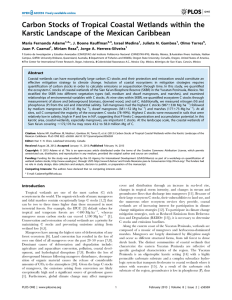Delimitation of global mangrove biogeographic regions based on species
advertisement
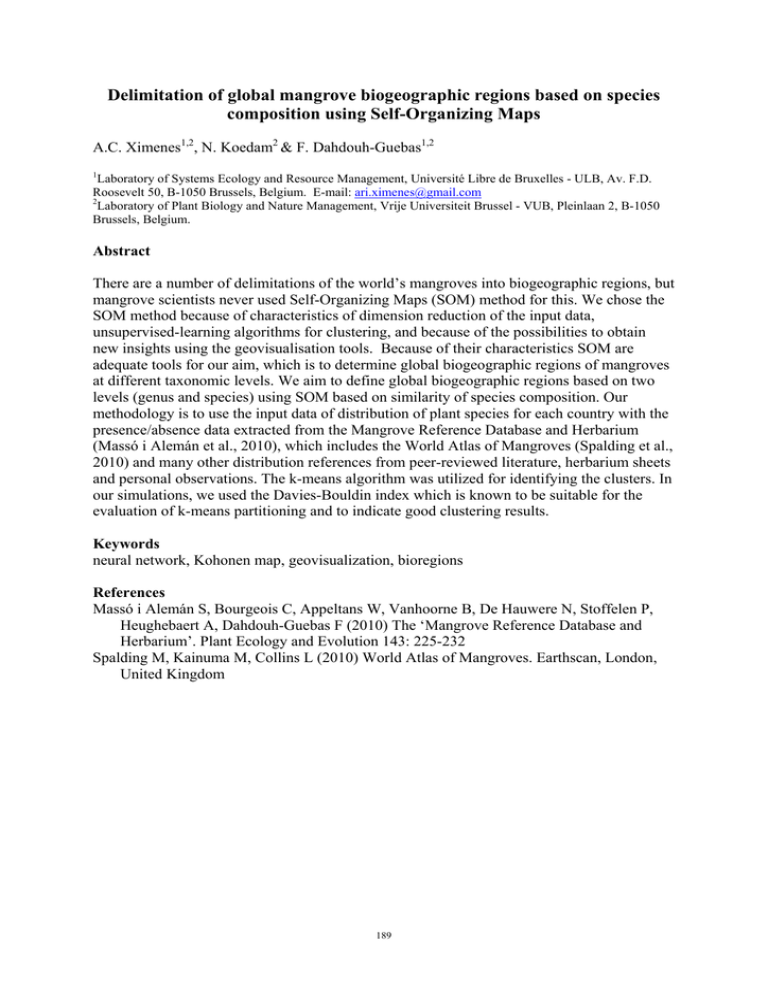
Delimitation of global mangrove biogeographic regions based on species composition using Self-Organizing Maps A.C. Ximenes1,2, N. Koedam2 & F. Dahdouh-Guebas1,2 1 Laboratory of Systems Ecology and Resource Management, Université Libre de Bruxelles - ULB, Av. F.D. Roosevelt 50, B-1050 Brussels, Belgium. E-mail: ari.ximenes@gmail.com 2 Laboratory of Plant Biology and Nature Management, Vrije Universiteit Brussel - VUB, Pleinlaan 2, B-1050 Brussels, Belgium. Abstract There are a number of delimitations of the world’s mangroves into biogeographic regions, but mangrove scientists never used Self-Organizing Maps (SOM) method for this. We chose the SOM method because of characteristics of dimension reduction of the input data, unsupervised-learning algorithms for clustering, and because of the possibilities to obtain new insights using the geovisualisation tools. Because of their characteristics SOM are adequate tools for our aim, which is to determine global biogeographic regions of mangroves at different taxonomic levels. We aim to define global biogeographic regions based on two levels (genus and species) using SOM based on similarity of species composition. Our methodology is to use the input data of distribution of plant species for each country with the presence/absence data extracted from the Mangrove Reference Database and Herbarium (Massó i Alemán et al., 2010), which includes the World Atlas of Mangroves (Spalding et al., 2010) and many other distribution references from peer-reviewed literature, herbarium sheets and personal observations. The k-means algorithm was utilized for identifying the clusters. In our simulations, we used the Davies-Bouldin index which is known to be suitable for the evaluation of k-means partitioning and to indicate good clustering results. Keywords neural network, Kohonen map, geovisualization, bioregions References Massó i Alemán S, Bourgeois C, Appeltans W, Vanhoorne B, De Hauwere N, Stoffelen P, Heughebaert A, Dahdouh-Guebas F (2010) The ‘Mangrove Reference Database and Herbarium’. Plant Ecology and Evolution 143: 225-232 Spalding M, Kainuma M, Collins L (2010) World Atlas of Mangroves. Earthscan, London, United Kingdom 189
